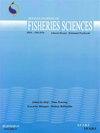Research Article: Cultivations of Arthrospira maxima (Spirulina) using ammonium sulfate and sodium nitrate as an alternative nitrogen sources
IF 0.6
4区 农林科学
Q3 FISHERIES
引用次数: 5
Abstract
Arthrospira (Spirulina)has been considered as an attractive microalgae in all aspects of human life including medicine, cosmetics, and food. Nitrogen source is an important cost-saving factor in large-scale cultivation. In the present study, the cultivation of S. maxima was studied by replacing the basic-nitrogen source of Zarrouk’s medium (2.5 gL-1) with concentration ranges of 0-10 gL-1 for sodium nitrate and 0-5 gL-1 for ammonium sulfate in terms of biomass and phycobiliproteins production. Biomass and phycobiliprotein growth of different nitrogen sources have shown different effects on growth. The changes in the amount of cell dry weight as a function of sodium nitrate did not show significant changes relating to its concentration. In case of ammonium sulfate, the cell dry weight of S. maxima without nitrogen source was 0.835 gL-1 during five days of cultivation. Moreover, phycocyanin and allophycocyanin contents were 0.053 and 0.072 mgL-1, respectively, while phycobiliproteins content and cell dry weight were decreased by increasing further concentration.There was a significant difference among the culture mediums containing ammonium sulfate and without nitrogen source in terms of concentration of biomass and phycobiliprotein. The highest and lowest results for cell dry weight and phycobiliprotein production were obtained from the treatment with nitrogen starvation and 5 gL-1 ammonium sulfate, respectively. Finally, nitrogen starvation was proved as a feasible way to grow and could be good candidate for biomass growth and phycobiliprotein.研究文章:利用硫酸铵和硝酸钠作为替代氮源培育最大节旋藻(螺旋藻)
节螺旋藻(Arthrospira spirina)是一种极具吸引力的微藻,在医药、化妆品、食品等人类生活的各个方面都有应用。氮源是大规模栽培中节约成本的重要因素。本研究以硝酸钠浓度为0-10 gL-1,硫酸铵浓度为0-5 gL-1,替代Zarrouk培养基(2.5 gL-1)的碱性氮源,研究了其生物量和藻胆蛋白产量的变化。不同氮源对生物量和藻胆蛋白生长的影响不同。细胞干重随硝酸钠浓度的变化不明显。在硫酸铵处理下,无氮源的最大葡萄球菌在培养5 d时细胞干重为0.835 gL-1。藻蓝蛋白和异藻蓝蛋白含量分别为0.053和0.072 mg -1,藻胆蛋白含量和细胞干重随浓度的增加而降低。含铵培养基和无氮源培养基的生物量和藻胆蛋白含量差异显著。细胞干重和藻胆蛋白产量均以氮饥饿处理和5 gL-1硫酸铵处理最高和最低。最后,氮饥饿被证明是一种可行的生长方式,可能是生物量增长和藻胆蛋白的良好候选。
本文章由计算机程序翻译,如有差异,请以英文原文为准。
求助全文
约1分钟内获得全文
求助全文
来源期刊

Iranian Journal of Fisheries Sciences
FISHERIES-
CiteScore
2.30
自引率
11.10%
发文量
0
审稿时长
3 months
期刊介绍:
1- Living various species (contains animals and vegetal species) in various aquatic ecosystems.
2- Health and diseases of aquatic species.
3- Determining the stocks and specific time and location for catching and reliable exploitation for sustainable development.
4- Methods of propagation and culture of high value aquatic resources.
5- Aquatic stock assessment and the methods of restocking the high value species and suggestion for rate, areas and the time for releasing fish and other aquatic organisms fries.
6- Pollutant agents and their effects to the environments of aquatic species.
7- Feed and feeding in aquatic organisms.
8- Fish processing and producing new products.
9- The economic and social aspects of fisheries.
 求助内容:
求助内容: 应助结果提醒方式:
应助结果提醒方式:


